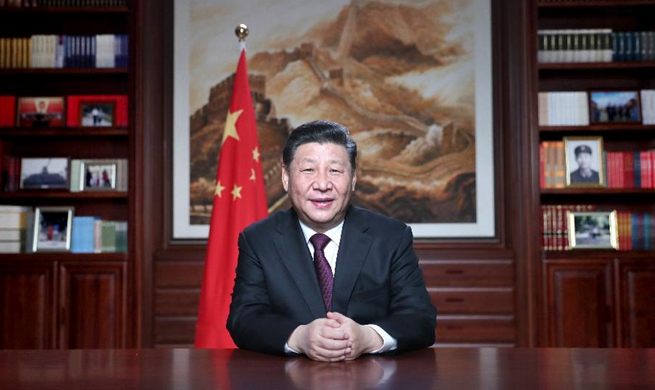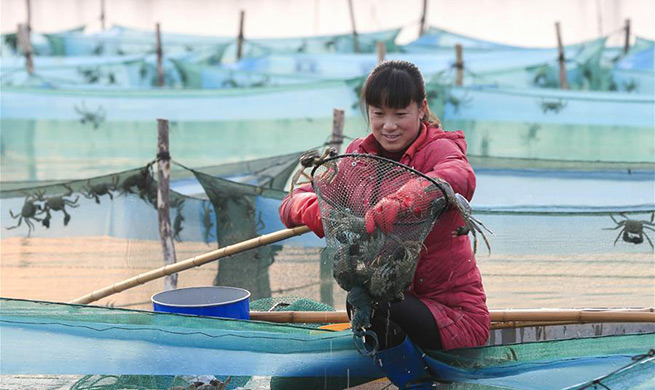CHICAGO, Dec. 31 (Xinhua) -- By enticing away the repressors dampening unexpressed silent genes in Streptomyces bacteria, researchers at the University of Illinois (UI) have unlocked several large gene clusters for new natural products.
The researchers previously demonstrated a technique to activate small silent gene clusters using CRISPR technology. However, large silent gene clusters have remained difficult to unmute.
To unlock the large gene clusters of greatest interest, UI researchers created clones of the DNA fragments they wanted to express and injected them into the bacteria in hopes of luring away the repressor molecules that were preventing gene expression. They called these clones transcription factor decoys.
To prove that the molecules they coded for were being expressed, researchers tested the decoy method first on two known gene clusters that synthesize natural products. Next, they created decoys for eight silent gene clusters that had been previously unexplored. In bacteria injected with the decoys, the targeted silent genes were expressed and the researchers harvested new products.
"We saw that the method works well for these large clusters that are hard to target by other methods," said study leader and chemical and biomolecular engineering professor Huimin Zhao. "It also has the advantage that it does not disturb the genome; it's just pulling away the repressors. Then the genes are expressed naturally from the native DNA."
In the search for drug candidates, each product needs to be isolated and then studied to determine what it does. Of the eight new molecules produced, the researchers purified and determined the structure of two molecules, and described one in detail in the study: a novel type of oxazole, a class of molecules often used in drugs.
The researchers plan next to characterize the rest of the eight compounds and run various assays to find out whether they have any anti-microbial, anti-fungal, anti-cancer or other biological activities.
As many antibiotics, anti-cancer agents and other drugs have been derived from genes readily expressed in Streptomyces, the researchers hope that unsilencing genes that have not previously been expressed in the lab will yield additional candidates in the search for new antimicrobial drugs.
In the next step, the researchers plan to apply the decoy technique to explore more silent biosynthetic gene clusters of interest in Streptomyces and in other bacteria and fungi to find more undiscovered natural products.
The study has been published in the journal Nature Chemical Biology.

















